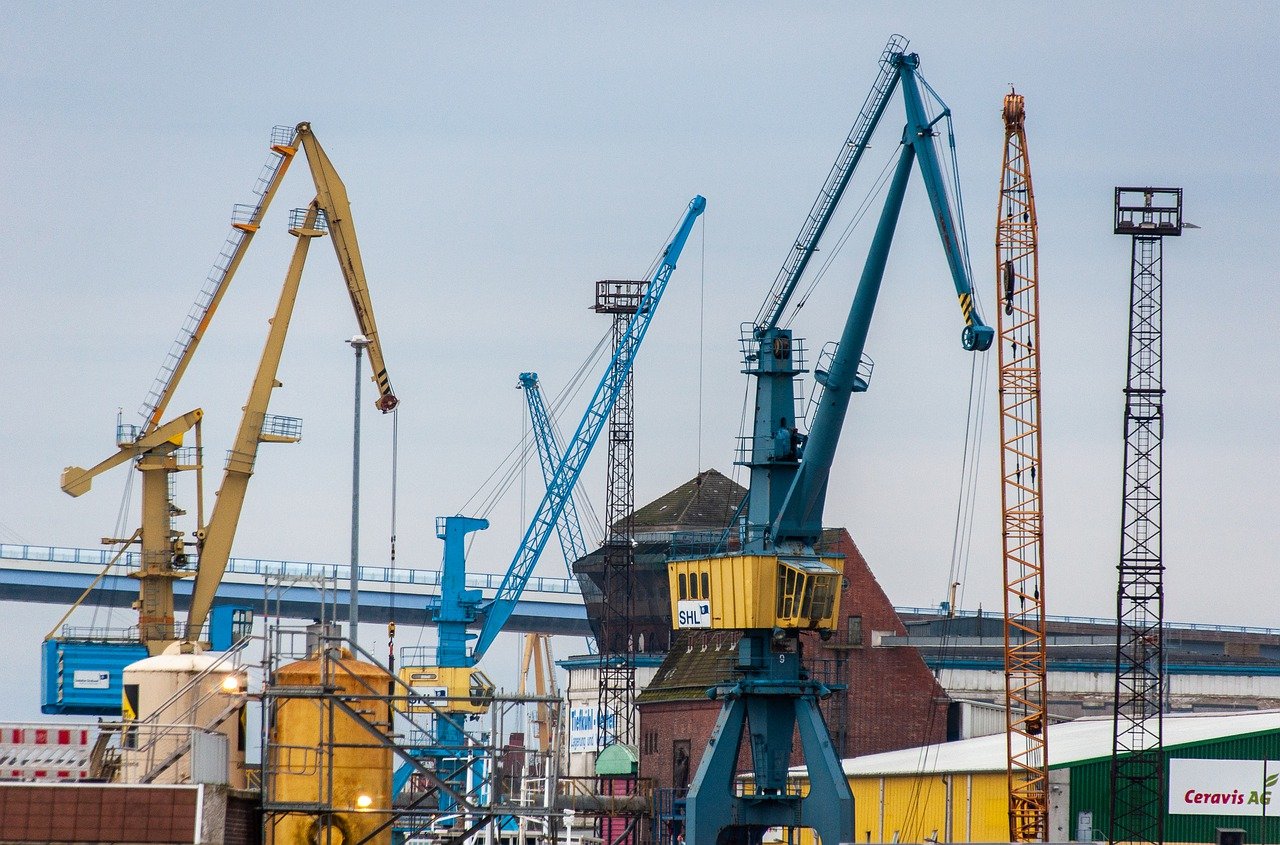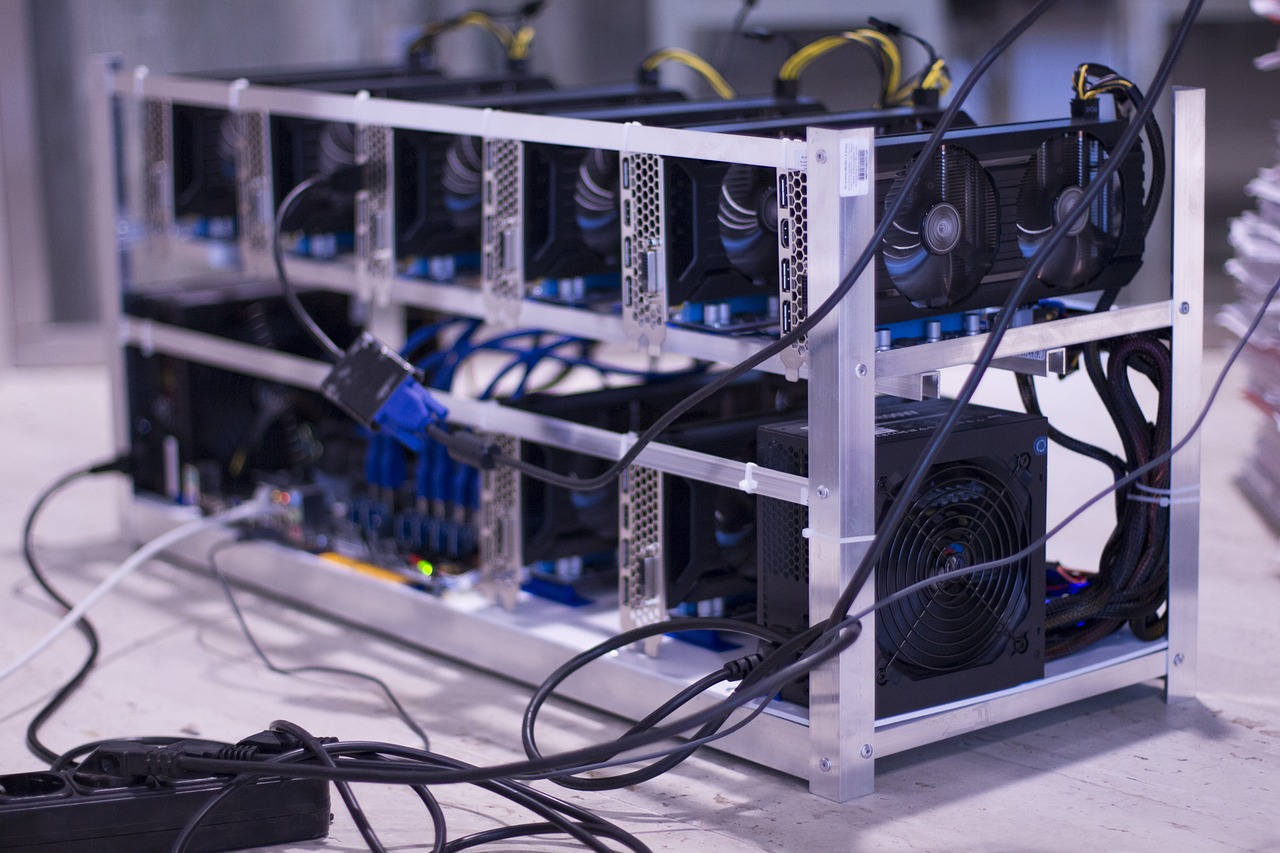QNT - The Overledger Network Overview
The Overledger Network is a groundbreaking innovation in the realm of blockchain technology, designed to break down the silos that have traditionally hindered the interoperability of various blockchain platforms. Imagine a world where different blockchains can communicate seamlessly, sharing data and assets without the cumbersome barriers that often slow down transactions. This is the vision that the Overledger Network seeks to realize. By facilitating a multi-chain environment, Overledger not only enhances the functionality of blockchain technology but also paves the way for new applications and services that can revolutionize industries.
At its core, Overledger operates on the principle of interoperability, allowing disparate blockchain systems to interact with one another. This means that whether you're dealing with Ethereum, Bitcoin, or any other blockchain, Overledger acts as a bridge, enabling users to transfer information and assets across these networks effortlessly. This interoperability is not just a technical feat; it represents a significant shift in how we think about blockchain ecosystems. Instead of isolated networks, we are moving towards a more integrated and collaborative approach that leverages the strengths of each individual blockchain.
In addition to its interoperability features, Overledger is built on a robust architecture that prioritizes scalability and security. As the number of users and transactions continues to grow, it becomes increasingly important for blockchain networks to handle this demand without compromising performance. Overledger addresses these challenges head-on, ensuring that it can support a vast array of applications across different sectors, from finance to supply chain management.
As we delve deeper into this article, we will explore the key features that set Overledger apart, including its unique approach to cross-chain transactions and smart contract integration. We will also examine the various use cases that highlight the potential of Overledger to transform industries and improve operational efficiencies. So, buckle up as we embark on this journey to uncover the intricacies of the Overledger Network!
Overledger is a multi-chain network that facilitates interoperability between different blockchain platforms, allowing seamless communication and data exchange. This section delves into its core principles and design.
Overledger boasts several unique features, including scalability, security, and multi-chain compatibility. Here, we highlight the essential attributes that set Overledger apart from other blockchain solutions.
Interoperability is the cornerstone of Overledger, enabling various blockchains to communicate effectively. This subheading discusses how Overledger achieves this crucial aspect and its implications for the broader blockchain landscape.
Cross-chain transactions allow users to transfer assets between different blockchain networks seamlessly. This section explains how Overledger facilitates these transactions and their significance in enhancing blockchain usability.
Smart contracts play a vital role in Overledger's functionality. Here, we explore how Overledger integrates smart contracts across multiple chains, enabling diverse applications and services.
Scalability is essential for any blockchain network. This part examines how Overledger addresses scalability challenges to support a growing number of users and transactions without compromising performance.
Overledger's versatile architecture allows for various applications across industries. This section highlights some prominent use cases, showcasing its potential to revolutionize sectors like finance, supply chain, and healthcare.
In the financial sector, Overledger can streamline processes and enhance security. This subheading discusses specific applications within banking and finance, illustrating the network's transformative impact.
Overledger can optimize supply chain operations by providing real-time data and transparency. Here, we explore how its capabilities can improve efficiency and accountability in supply chains.
- What is Overledger? Overledger is a multi-chain network designed to facilitate interoperability between different blockchain platforms.
- How does Overledger achieve interoperability? Overledger uses a unique architecture that allows various blockchains to communicate and exchange data seamlessly.
- What are the key features of Overledger? Key features include scalability, security, and the ability to support cross-chain transactions and smart contracts.
- What industries can benefit from Overledger? Overledger has potential applications in various sectors, including finance, supply chain, and healthcare.

Understanding Overledger
Overledger is not just another blockchain; it’s a multi-chain network designed to break down the silos that have traditionally existed between different blockchain platforms. Imagine a world where various blockchains can communicate with each other as easily as you send a message to a friend. That’s the essence of Overledger! It facilitates interoperability, allowing for seamless communication and data exchange across multiple blockchain networks. This is crucial because, in the rapidly evolving blockchain ecosystem, the ability to share information and assets across platforms can unlock incredible potential.
At its core, Overledger is built on several fundamental principles. First and foremost is the idea of interoperability. In a landscape where countless blockchains exist, each with its own unique features and benefits, Overledger acts as a bridge, enabling these disparate systems to work together. This capability is not merely a nice-to-have; it’s essential for the future of blockchain technology. As more businesses and applications adopt blockchain solutions, the demand for efficient cross-chain communication will only grow.
Another key principle of Overledger is scalability. As the number of users and transactions increases, it’s vital that the network can handle this growth without sacrificing performance. Overledger achieves this through a unique architecture that distributes workloads efficiently, ensuring that transactions can be processed quickly and reliably.
Moreover, security is a top priority for Overledger. In a world where cyber threats are increasingly sophisticated, ensuring that data remains secure during cross-chain transactions is paramount. Overledger employs advanced cryptographic techniques to safeguard information, ensuring that users can trust the network for their transactions.
To sum it up, Overledger is a groundbreaking solution that addresses some of the most pressing challenges in the blockchain space. By enabling interoperability, enhancing scalability, and prioritizing security, it positions itself as a game-changer in the industry. Whether you’re a developer looking to build applications that span multiple blockchains or a business seeking to leverage blockchain technology, Overledger offers the tools and capabilities to make that possible.
As we delve deeper into the features and applications of Overledger, it becomes clear that its architecture is not just innovative; it’s essential for the future of blockchain technology. The ability to connect different blockchain networks opens up a world of possibilities, transforming how we think about data and assets in the digital age.

Key Features of Overledger
Overledger is not just another blockchain solution; it’s a revolutionary platform that brings together the best of multiple blockchains, creating a seamless ecosystem for data and asset transfer. One of its standout features is its **interoperability**, which allows different blockchains to communicate with one another effortlessly. Imagine trying to have a conversation with someone who speaks a different language; it can be challenging, right? Overledger acts as a translator, enabling these diverse blockchain platforms to share information and value without barriers.
Another key feature is **scalability**. In today’s fast-paced digital world, the ability to handle a growing number of transactions is critical. Overledger is designed to support a massive volume of transactions without compromising on speed or efficiency. Think of it like a highway with multiple lanes; as more cars (or transactions) enter, the road can accommodate them without causing traffic jams. This scalability ensures that as the demand for blockchain solutions increases, Overledger can keep up.
Security is also a top priority for Overledger. With the rise of cyber threats, having a robust security framework is essential. Overledger employs advanced cryptographic techniques and decentralized protocols to safeguard data. This means that users can trust the platform to keep their assets and information secure. It’s akin to having a high-tech vault that not only protects your valuables but also allows you to access them anytime, anywhere.
Moreover, Overledger supports **multi-chain compatibility**, which means it can connect with various blockchain networks. This feature is vital for businesses looking to leverage the strengths of different blockchains without being locked into a single ecosystem. For instance, a company might want to use Ethereum for its smart contracts but prefer Bitcoin for its transactional capabilities. Overledger makes this possible, allowing businesses to pick and choose the best tools for their needs.
To summarize, the key features of Overledger can be encapsulated in the following table:
| Feature | Description |
|---|---|
| Interoperability | Facilitates communication between different blockchain networks. |
| Scalability | Handles a growing number of transactions efficiently. |
| Security | Employs advanced cryptographic techniques to protect data. |
| Multi-chain Compatibility | Allows integration with various blockchain platforms. |
In conclusion, Overledger's unique features not only enhance its functionality but also position it as a game changer in the blockchain landscape. By offering interoperability, scalability, security, and multi-chain compatibility, Overledger is paving the way for a more connected and efficient future in the world of blockchain technology.
- What is Overledger? Overledger is a multi-chain network that enables interoperability between different blockchain platforms.
- How does Overledger ensure security? Overledger uses advanced cryptographic techniques and decentralized protocols to safeguard user data.
- Can Overledger connect with any blockchain? Yes, Overledger is designed to be compatible with various blockchain networks, allowing for a flexible and integrated approach.
- What industries can benefit from Overledger? Industries such as finance, supply chain, and healthcare can leverage Overledger's capabilities to enhance their operations.

Interoperability
is not just a buzzword in the blockchain space; it's the lifeblood of the Overledger Network. Imagine a world where different blockchain platforms can communicate with one another as effortlessly as sending a text message. That's exactly what Overledger aims to achieve. By breaking down the silos that exist between various blockchain ecosystems, Overledger allows for seamless data exchange and interaction. This means that whether you’re using Ethereum, Bitcoin, or any other blockchain, you can interact and transact without the usual headaches of compatibility issues.
At the heart of Overledger's interoperability is its unique architecture, which acts like a universal translator for blockchains. It supports multiple protocols and standards, enabling different chains to work together. This is akin to having a common language that everyone understands, regardless of their native tongue. With Overledger, developers can create applications that leverage the strengths of multiple blockchains, leading to more robust and versatile solutions.
One of the most exciting aspects of Overledger's interoperability is its potential to unlock new use cases and applications. For instance, developers can build decentralized applications (dApps) that utilize the best features of various blockchains. This means that a dApp could leverage the security of Bitcoin, the smart contract capabilities of Ethereum, and the speed of another blockchain, all in one platform. The possibilities are endless!
To illustrate the significance of interoperability, consider the following key benefits:
- Enhanced Collaboration: Different organizations can collaborate on projects without worrying about the underlying blockchain technologies.
- Increased Efficiency: By allowing cross-chain transactions, Overledger reduces the time and costs associated with traditional methods of transferring assets.
- Broader Market Access: Businesses can tap into multiple blockchain ecosystems, expanding their reach and potential customer base.
In summary, interoperability is the cornerstone of the Overledger Network. It not only enhances the functionality of blockchain applications but also fosters innovation by allowing developers to combine the strengths of various platforms. As the blockchain landscape continues to evolve, the ability to interconnect different networks will be vital for the growth and adoption of decentralized technologies.
Q: What is Overledger?
A: Overledger is a multi-chain network designed to facilitate interoperability between various blockchain platforms, enabling seamless communication and data exchange.
Q: Why is interoperability important?
A: Interoperability allows different blockchains to work together, enhancing collaboration, increasing efficiency, and providing broader market access for businesses.
Q: How does Overledger achieve interoperability?
A: Overledger employs a unique architecture that supports multiple protocols and standards, acting as a universal translator for different blockchains.
Q: What are the potential applications of Overledger?
A: Overledger can be applied across various industries, including finance, supply chain management, healthcare, and more, enabling innovative solutions and improved processes.

Cross-Chain Transactions
Cross-chain transactions are a game-changer in the blockchain ecosystem, and Overledger is at the forefront of this innovation. Imagine trying to communicate with someone who speaks a different language; without a translator, the conversation would be nearly impossible. Similarly, in the world of blockchain, different networks often struggle to exchange information and value. This is where Overledger steps in, acting as that much-needed translator, enabling seamless asset transfers between various blockchain platforms.
The ability to conduct cross-chain transactions not only enhances user experience but also opens up a world of possibilities for developers and businesses. With Overledger, users can transfer assets across multiple blockchains without the need for intermediaries. This means that you could, for instance, send Bitcoin from the Bitcoin network to Ethereum and have it converted into Ether automatically, all in one smooth transaction. This is not just theoretical; it’s a practical application that could redefine how we think about digital currencies and assets.
Overledger achieves this through its unique architecture, which allows it to connect different blockchains while maintaining their individual protocols. This means that even though the networks operate independently, they can interact through Overledger without compromising security or efficiency. The implications of this are profound, as it paves the way for a truly interconnected blockchain ecosystem. Here are some of the key benefits of cross-chain transactions enabled by Overledger:
- Increased Liquidity: By allowing assets to flow seamlessly between networks, Overledger increases the liquidity of digital assets, making them more accessible and usable.
- Enhanced User Experience: Users can manage their assets across different blockchains from a single interface, simplifying the process of trading and transferring assets.
- Cost Efficiency: Reducing the need for multiple intermediaries lowers transaction fees and speeds up the process.
Moreover, the implications for businesses are equally significant. Companies can leverage Overledger's cross-chain capabilities to create innovative financial products, such as decentralized exchanges that operate across multiple blockchains, or even new forms of digital wallets that support a wider array of cryptocurrencies. The potential applications are vast and varied, making Overledger a vital player in the future of decentralized finance (DeFi) and beyond.
In conclusion, cross-chain transactions facilitated by Overledger not only simplify the transfer of assets but also enhance the overall functionality of blockchain technology. As we continue to explore the potential of this network, it’s clear that Overledger is not just another blockchain solution; it’s a bridge to a more interconnected and efficient future.

Smart Contract Integration
Smart contracts are often hailed as the backbone of blockchain technology, and in the realm of Overledger, they take on an even more significant role. Think of smart contracts as self-executing agreements with the terms of the contract directly written into lines of code. This means they can automate processes, reduce the need for intermediaries, and enhance trust between parties. Overledger's architecture allows for the integration of smart contracts across multiple blockchain networks, which is a game-changer in terms of functionality and usability.
By enabling smart contracts to operate on various chains, Overledger opens up a world of possibilities. Imagine a scenario where a smart contract can execute a transaction on Ethereum while simultaneously interacting with a supply chain on Hyperledger. This interoperability not only enhances the efficiency of transactions but also allows for the creation of complex applications that can leverage the strengths of different blockchain platforms. For instance, a financial service provider could use Overledger to automate loan approvals across various networks, ensuring that all parties are in sync and that the process is transparent and secure.
Moreover, the integration of smart contracts within Overledger is not just about executing pre-defined conditions; it also introduces the concept of cross-chain logic. This means that smart contracts can be designed to respond to events occurring on different blockchains, creating a more dynamic and responsive ecosystem. For example, a smart contract could be programmed to release funds only when certain conditions are met across multiple chains, such as verifying transaction completion on one blockchain before proceeding with a transfer on another.
To illustrate the impact of smart contract integration in Overledger, let's consider some key benefits:
- Enhanced Efficiency: Automating processes reduces the time and effort required for manual interventions.
- Improved Security: Smart contracts operate on the blockchain, making them tamper-proof and transparent.
- Increased Flexibility: Cross-chain capabilities allow for the development of innovative applications that can adapt to various use cases.
In conclusion, Overledger's smart contract integration is a pivotal feature that not only enhances the functionality of the network but also paves the way for a new era of blockchain applications. By allowing smart contracts to interact across different chains, Overledger is fostering an environment where creativity and efficiency can thrive, ultimately driving the adoption of blockchain technology in diverse sectors.
1. What are smart contracts?
Smart contracts are self-executing contracts with the terms of the agreement directly written into code, allowing for automated transactions without the need for intermediaries.
2. How does Overledger enhance smart contract functionality?
Overledger allows smart contracts to operate across multiple blockchain networks, enabling greater interoperability and the ability to create complex applications that leverage the strengths of different platforms.
3. What are the benefits of using smart contracts in Overledger?
The main benefits include enhanced efficiency, improved security, and increased flexibility, allowing for innovative solutions in various industries.

Scalability Solutions
When we talk about scalability in the blockchain realm, we're diving into one of the most critical challenges that networks face today. Imagine a bustling highway during rush hour; if too many cars are on the road, traffic slows to a crawl. Similarly, as more users flock to a blockchain network, the demand for transaction processing increases. Overledger addresses this issue head-on, ensuring that it can handle a growing number of users and transactions without sacrificing performance.
One of the standout features of Overledger is its architecture, designed specifically to support scalability. By utilizing a unique multi-chain approach, Overledger allows for the distribution of transactions across various blockchains. This means that instead of all transactions being processed on a single chain, they can be spread out, much like how traffic can be diverted to multiple routes to avoid congestion. This distribution not only enhances speed but also ensures that the network remains responsive, even during peak usage times.
Moreover, Overledger incorporates a mechanism known as sharding. This technique breaks the network into smaller, more manageable pieces, or 'shards,' each capable of processing transactions independently. By doing so, Overledger can dramatically increase its throughput, allowing it to support thousands of transactions per second. To put this into perspective, think of a restaurant with multiple kitchens; each kitchen can prepare different dishes simultaneously, resulting in faster service for diners.
In addition to sharding, Overledger employs layered solutions that enhance scalability. These layers work in tandem to offload certain tasks from the main blockchain, ensuring that it can focus on what it does best—securely processing transactions. For instance, secondary layers can handle less critical transactions or data storage, freeing up the primary chain for high-priority operations. This multi-layered approach not only improves efficiency but also enhances the overall user experience.
To further illustrate how Overledger scales effectively, let’s take a look at the following table:
| Feature | Description | Benefit |
|---|---|---|
| Multi-Chain Architecture | Distributes transactions across various blockchains. | Reduces congestion and increases transaction speed. |
| Sharding | Breaks the network into smaller pieces for independent processing. | Allows for higher throughput and faster response times. |
| Layered Solutions | Offloads non-critical tasks to secondary layers. | Enhances efficiency and prioritizes important transactions. |
In conclusion, Overledger's innovative approach to scalability not only addresses the current challenges faced by blockchain networks but also sets a solid foundation for future growth. With its multi-chain architecture, sharding capabilities, and layered solutions, Overledger ensures that as the blockchain ecosystem expands, it can accommodate the increasing demand without compromising on performance or user experience. So, if you're looking for a blockchain solution that can grow with you, Overledger might just be the highway you want to take!
- What is Overledger? Overledger is a multi-chain network that enables interoperability between various blockchain platforms.
- How does Overledger achieve scalability? Overledger utilizes multi-chain architecture, sharding, and layered solutions to enhance scalability.
- What are the benefits of using Overledger? It provides faster transaction speeds, improved efficiency, and the ability to handle a growing number of users and transactions.
- Can Overledger be used in various industries? Yes, Overledger's versatile architecture allows it to be applied across various sectors, including finance and supply chain management.

Use Cases of Overledger
Overledger's versatile architecture is not just a theoretical concept; it has real-world applications that can transform various industries. From finance to supply chain management, the potential use cases of Overledger are vast and impactful. Imagine a world where different blockchain networks can communicate effortlessly, where transactions are not limited by the constraints of individual chains. That’s the promise of Overledger, and it’s already being realized in several sectors.
In the financial services sector, Overledger is poised to streamline processes and enhance security. Traditional banking systems often struggle with inefficiencies and delays, but with Overledger, financial institutions can conduct transactions across multiple blockchains in real-time. This capability not only reduces transaction times but also minimizes costs associated with cross-border payments. For instance, a bank could utilize Overledger to facilitate a transaction between two clients on different blockchain networks without the need for intermediaries, thus reducing fees and enhancing the overall customer experience.
Moreover, Overledger's smart contract integration allows financial services to automate processes that were previously manual and time-consuming. By deploying smart contracts across various chains, banks can create more efficient workflows, ensuring that agreements are executed automatically once the conditions are met. This reduces the risk of human error and increases trust in the system. For example, imagine a loan agreement that automatically releases funds when certain criteria are met, all facilitated by Overledger’s multi-chain capabilities.
Another significant use case lies in supply chain management. Overledger can optimize supply chain operations by providing real-time data and transparency. In an age where consumers demand to know the origin of their products, Overledger enables stakeholders to track goods from production to delivery. This level of transparency not only enhances accountability but also builds consumer trust. For instance, a food company could use Overledger to trace the journey of its products, ensuring that they meet safety standards and ethical sourcing requirements.
Consider the following table that outlines some key benefits of using Overledger in supply chain management:
| Benefit | Description |
|---|---|
| Real-time Tracking | Allows stakeholders to monitor the status of goods at any point in the supply chain. |
| Enhanced Transparency | Provides consumers with information about product origins and handling. |
| Improved Efficiency | Streamlines operations by reducing delays and optimizing logistics. |
| Increased Accountability | Ensures all parties in the supply chain adhere to agreed standards and practices. |
Another exciting application of Overledger is in the realm of healthcare. With the ability to connect various healthcare systems, Overledger can facilitate the secure sharing of patient data across different providers. This is crucial for ensuring that patients receive the best possible care, regardless of where they are treated. Imagine a scenario where a patient’s medical history is accessible to any doctor, anywhere, without compromising privacy or security. Overledger makes this a reality, allowing for more coordinated and effective treatment plans.
In summary, the use cases of Overledger are as diverse as they are promising. By enabling interoperability between different blockchain platforms, Overledger not only enhances the functionality of existing systems but also opens doors to innovative solutions across multiple industries. Whether it’s improving financial services, optimizing supply chains, or revolutionizing healthcare, Overledger is set to play a pivotal role in the future of blockchain technology.
- What is Overledger? - Overledger is a multi-chain network that facilitates interoperability between different blockchain platforms.
- How does Overledger enhance financial services? - It streamlines processes, reduces transaction times, and integrates smart contracts for automation.
- Can Overledger be used in supply chain management? - Yes, it provides real-time tracking, transparency, and improved efficiency in supply chain operations.
- What industries can benefit from Overledger? - Industries such as finance, supply chain, and healthcare can significantly benefit from Overledger's capabilities.

Financial Services
The financial services industry is undergoing a seismic shift, and Overledger is at the forefront of this transformation. With its unique ability to facilitate interoperability between different blockchain networks, Overledger is revolutionizing how financial institutions operate. Imagine a world where banks, payment processors, and other financial entities can communicate seamlessly, sharing data and assets without the traditional bottlenecks of legacy systems. This is not just a dream; it's a reality that Overledger is making possible.
One of the most significant benefits of Overledger in the financial sector is its capacity for enhanced security. In an age where data breaches and cyber threats are rampant, Overledger's multi-chain architecture ensures that transactions are not only secure but also transparent. Each transaction can be verified across multiple blockchains, creating an immutable record that is almost impossible to tamper with. This level of security is crucial for financial institutions that handle sensitive customer information and large sums of money.
Moreover, Overledger enables real-time transactions across different blockchain networks. Traditional banking systems often face delays due to the need for intermediary processes and reconciliations. However, with Overledger, assets can be transferred instantly between different platforms, significantly reducing the time required for cross-border transactions. This capability is particularly beneficial for international remittances, where speed and cost-effectiveness are paramount.
To illustrate the impact of Overledger on financial services, consider the following key applications:
- Cross-border Payments: Overledger allows for seamless cross-border transactions, eliminating the need for multiple intermediaries and reducing transaction fees.
- Decentralized Finance (DeFi): By connecting various DeFi platforms, Overledger enables users to access a broader range of financial services, from lending to trading.
- Fraud Prevention: The transparency and traceability of blockchain transactions help financial institutions detect and prevent fraudulent activities more effectively.
Furthermore, Overledger's integration with smart contracts enhances operational efficiency. Financial institutions can automate processes such as loan approvals, compliance checks, and transaction settlements. This not only speeds up operations but also reduces human error, leading to a more reliable financial ecosystem. Imagine a smart contract that automatically executes a loan agreement once the specified conditions are met—no more waiting for manual approvals!
In summary, Overledger stands as a game-changer for the financial services sector. Its ability to facilitate secure, real-time transactions across multiple blockchains opens up a world of possibilities for innovation and efficiency. As more financial institutions adopt Overledger, we can expect to see a significant shift in how financial services are delivered, ultimately benefiting consumers and businesses alike.
What is Overledger?
Overledger is a multi-chain network designed to enable interoperability between different blockchain platforms, allowing for seamless communication and data exchange.
How does Overledger enhance security in financial transactions?
Overledger provides enhanced security through its multi-chain architecture, which allows for transaction verification across multiple blockchains, creating an immutable record that is difficult to tamper with.
Can Overledger facilitate cross-border payments?
Yes, Overledger can streamline cross-border payments by enabling instant asset transfers between different blockchain networks, reducing the need for intermediaries and lowering transaction fees.
What role do smart contracts play in Overledger?
Smart contracts enable automation of various financial processes within Overledger, enhancing operational efficiency and reducing the potential for human error.

Supply Chain Management
In today's fast-paced world, efficiency and transparency in supply chain management are more critical than ever. Overledger steps in as a game-changer, harnessing the power of blockchain technology to revolutionize how goods and services move from point A to point B. Imagine a world where every stakeholder—from manufacturers to retailers—can access real-time data, ensuring that everyone is on the same page. This is precisely what Overledger offers, making it a vital tool for optimizing supply chain operations.
One of the most significant advantages of using Overledger in supply chain management is its ability to provide real-time tracking of products. With Overledger's multi-chain capabilities, organizations can monitor their inventory and shipments across various blockchain networks. This means that if a product is delayed or rerouted, all parties involved are immediately notified, allowing for swift action to mitigate potential losses. The transparency that Overledger provides not only enhances accountability but also builds trust among partners, which is essential for long-term business relationships.
Moreover, Overledger's interoperability allows for seamless integration with existing supply chain systems. Companies can leverage their current technologies while benefiting from the advanced features of Overledger. This integration is crucial because it reduces the friction often associated with adopting new technologies, making it easier for organizations to transition to a more efficient model. By facilitating data sharing across various platforms, Overledger ensures that every stakeholder has access to the information they need to make informed decisions.
The implications of Overledger's capabilities extend beyond just tracking and transparency. For instance, consider a scenario where a food supplier needs to verify the origin of its products. With Overledger, the supplier can easily access a complete history of the product's journey from farm to table. This not only enhances food safety but also meets increasing regulatory demands for traceability. As consumers become more conscious about the origins of their food, companies that utilize Overledger can position themselves as leaders in transparency and accountability.
In addition to enhancing traceability, Overledger can significantly reduce operational costs. By automating various processes through smart contracts, companies can minimize human error and streamline workflows. For example, payment processes can be automated to trigger once specific conditions are met, ensuring that suppliers are paid promptly without the need for manual intervention. This not only speeds up transactions but also fosters better relationships between suppliers and buyers.
Furthermore, Overledger's robust security features protect sensitive data shared across the supply chain. In an era where data breaches are increasingly common, having a secure platform is paramount. Overledger employs advanced cryptographic techniques to ensure that data remains confidential and tamper-proof, giving organizations peace of mind as they share critical information with partners.
In conclusion, the integration of Overledger in supply chain management is not just a trend; it's a necessity for businesses looking to stay competitive in a rapidly evolving landscape. By enhancing efficiency, transparency, and security, Overledger paves the way for a more connected and accountable supply chain ecosystem. The potential applications are vast, and as more organizations recognize the benefits, we can expect to see a significant shift in how supply chains operate.
- What is Overledger?
Overledger is a multi-chain network designed to facilitate interoperability between different blockchain platforms, allowing seamless communication and data exchange. - How does Overledger improve supply chain management?
Overledger enhances supply chain management through real-time tracking, transparency, and automation, providing stakeholders with the information they need to make informed decisions. - Can Overledger integrate with existing systems?
Yes, Overledger is designed to integrate seamlessly with existing supply chain systems, making it easier for organizations to adopt its features without significant disruptions. - What security measures does Overledger provide?
Overledger employs advanced cryptographic techniques to protect sensitive data shared across the supply chain, ensuring confidentiality and integrity. - What industries can benefit from Overledger?
While Overledger is particularly beneficial for supply chain management, industries such as finance, healthcare, and logistics can also leverage its capabilities for enhanced operations.
Frequently Asked Questions
- What is Overledger?
Overledger is a multi-chain network designed to enable seamless interoperability between various blockchain platforms. It allows different blockchains to communicate and exchange data effortlessly, creating a more integrated blockchain ecosystem.
- How does Overledger achieve interoperability?
Overledger achieves interoperability through its unique architecture, which facilitates cross-chain communication. This means that different blockchains can share information and assets without the need for intermediaries, making transactions faster and more efficient.
- What are cross-chain transactions?
Cross-chain transactions refer to the ability to transfer assets between different blockchain networks. Overledger simplifies this process, allowing users to move their assets seamlessly across various platforms, enhancing usability and flexibility.
- How does Overledger integrate smart contracts?
Overledger integrates smart contracts across multiple chains by allowing them to interact with each other. This enables developers to create diverse applications and services that leverage the strengths of different blockchains, resulting in innovative solutions.
- What scalability solutions does Overledger offer?
Overledger addresses scalability challenges by utilizing a multi-chain architecture that can support a growing number of users and transactions. This ensures that the network remains efficient and responsive, even as demand increases.
- What are some use cases for Overledger?
Overledger has a wide range of potential applications across various industries. For instance, in financial services, it can streamline processes and enhance security. In supply chain management, it offers real-time data and transparency, improving efficiency and accountability.
- How can Overledger benefit the financial sector?
In the financial sector, Overledger can significantly enhance security and streamline operations. By enabling cross-chain transactions and integrating smart contracts, it can reduce costs and increase the speed of financial processes.
- Can Overledger improve supply chain operations?
Absolutely! Overledger can optimize supply chain operations by providing real-time data and transparency. This allows businesses to track products more efficiently, ensuring accountability and improving overall performance.



















